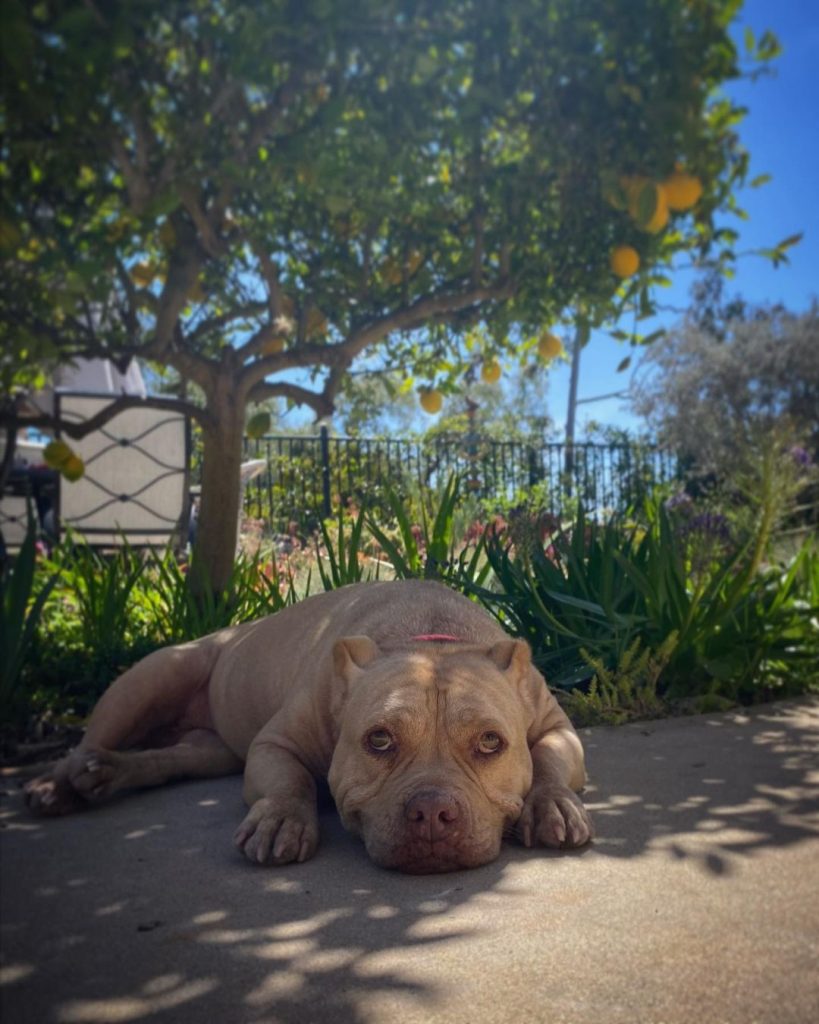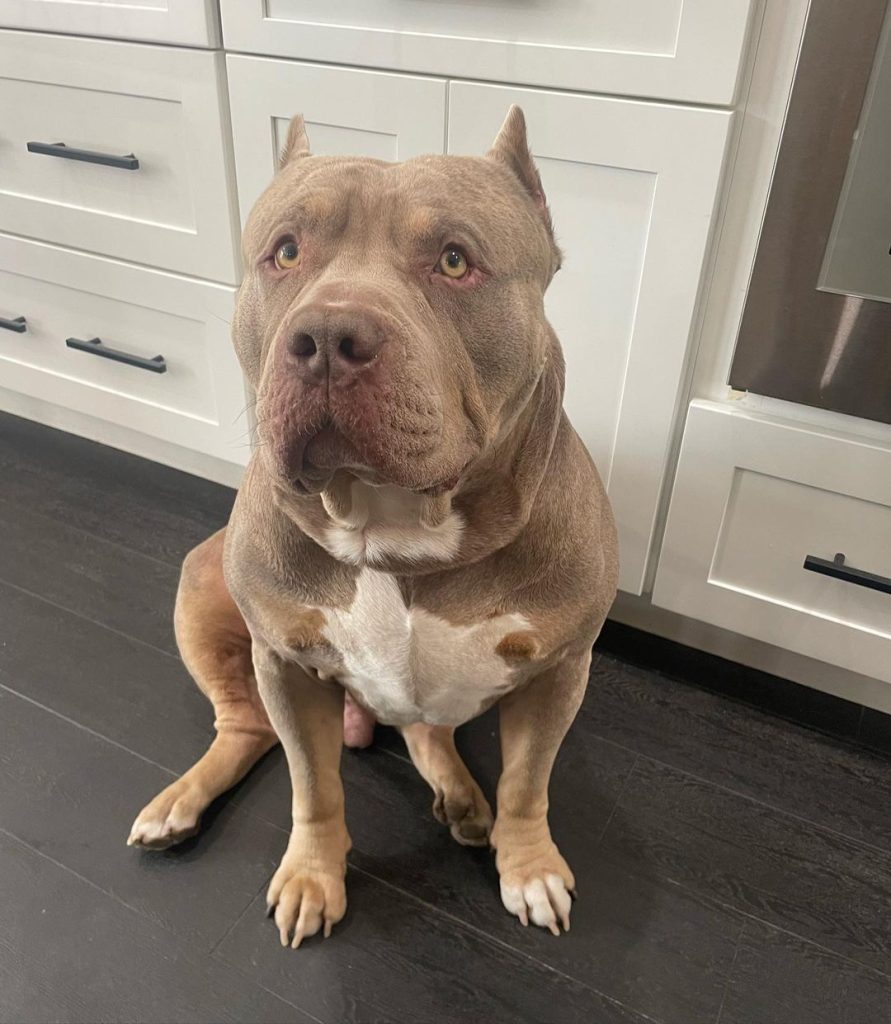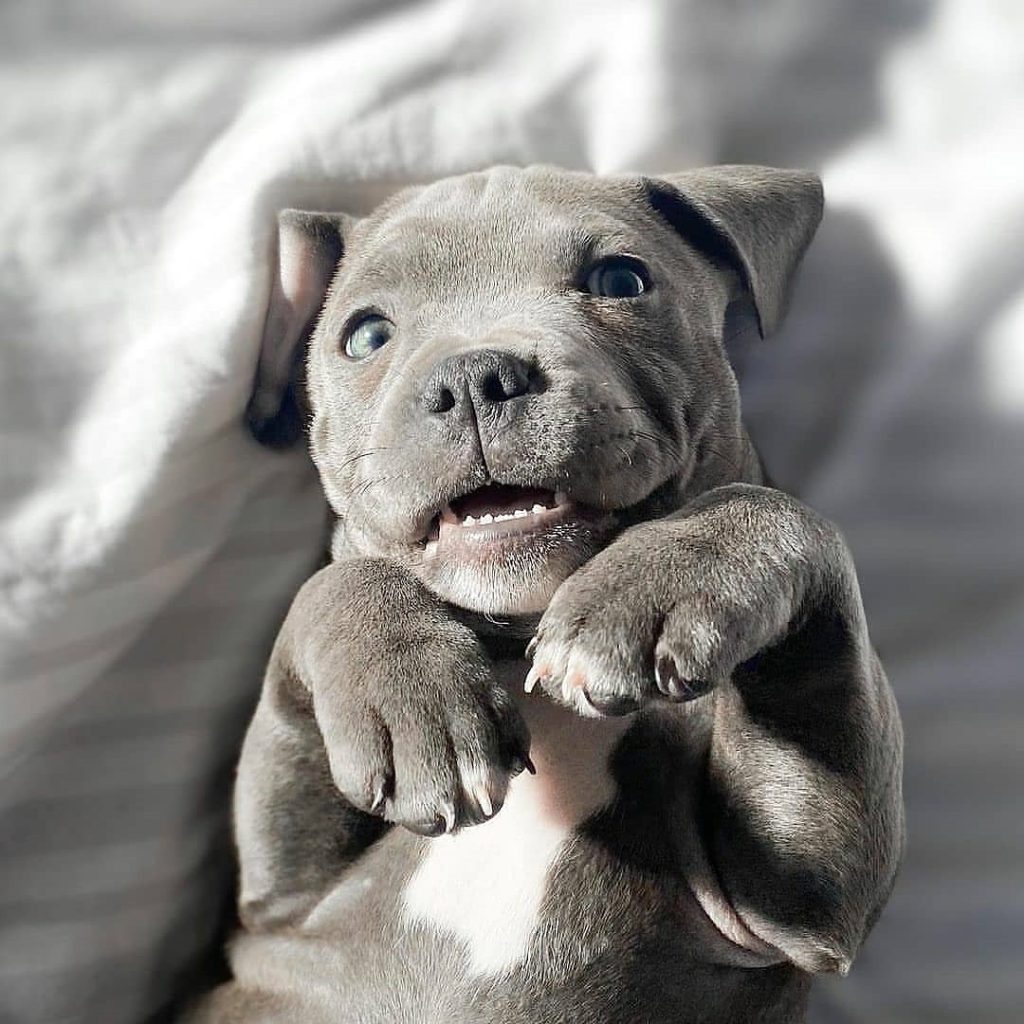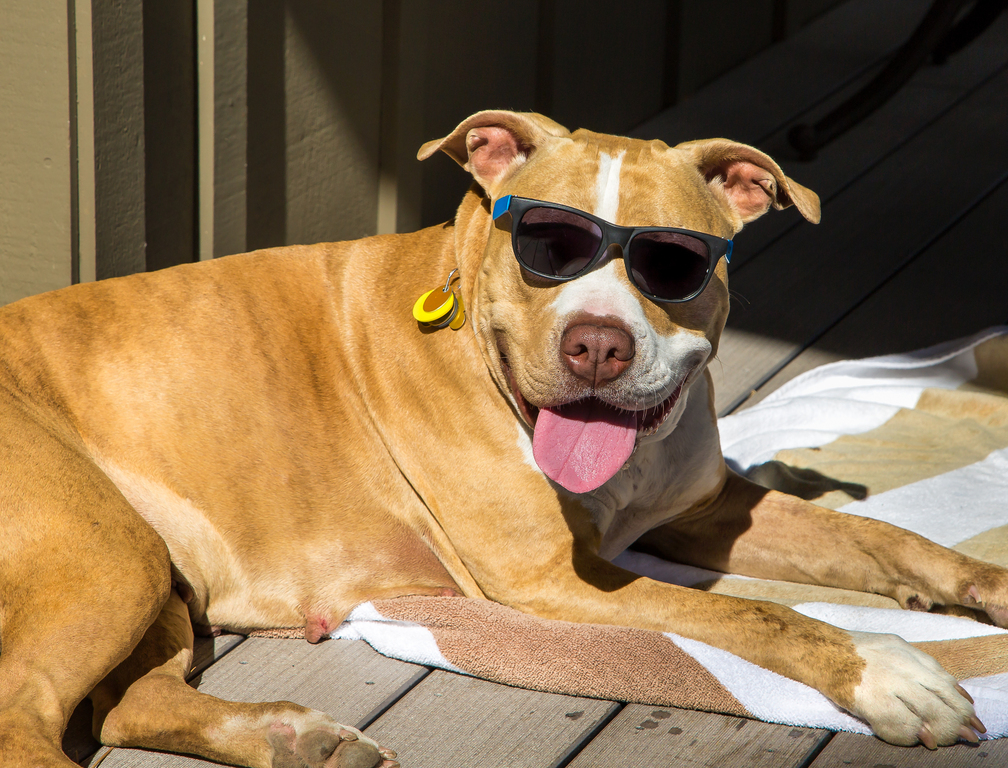Fundamentals of Pit Bull Training
Understanding the Pit Bull Breed
Pit Bulls, often unfairly stigmatized in today’s society, are in reality a breed characterized by their intelligence, affection, and a strong desire to please their owners. Originating from a mix of bulldogs and terriers, these dogs were initially bred for various purposes, including farming and companionship. Today, they are known for their robust energy, loyalty, and playful nature.

Contrary to common misconceptions, Pit Bulls are not inherently aggressive. In fact, their eagerness to please makes them excellent candidates for obedience and other forms of training. To effectively train your Pit Bull, one must first understand and respect their history and innate characteristics. Recognizing their need for regular exercise, mental stimulation, and strong leadership is essential in nurturing their true potential.
Key Principles in Training a Pit Bull
Training your Pitbull requires an approach that combines consistency, patience, and a deep understanding of canine psychology. Establishing yourself as a leader through positive reinforcement and clear communication is crucial. Pit Bulls respond well to rewards-based training, where desirable behaviors are reinforced with treats, praise, or play.
In the Key Principles in Training a Pitbull, several core elements are essential for effective training:
- Consistency: Maintain uniformity in commands and rules.
- Patience: Understand that learning takes time and each dog progresses at its own pace.
- Positive Reinforcement: Use treats, praise, and play to reward good behavior.
- Clear Communication: Ensure commands are straightforward and consistent.
- Leadership: Establish yourself as a calm and assertive leader.
- Understanding: Acknowledge and respect the unique nature and needs of the Pit Bull breed.
- Socialization: Expose them to various environments and situations early on.
- Exercise: Provide regular physical and mental activities to channel their energy positively.
A common mistake in training Pit Bulls, or any dog for that matter, is inconsistent messaging. Ensuring that the rules and expectations are the same from every member of the household is vital. These dogs thrive under structured, yet loving guidance. This segment emphasizes the importance of balance in training: being firm but fair, and strict but loving.
Early Stage Of Training Puppy PitBull
The Importance of Early Socialization
Socialization is arguably the most critical aspect of a young Pitbull puppy early training. Proper socialization involves exposing the puppy to various people, animals, environments, and situations. This exposure helps the dog develop a comfort with different stimuli, reducing fear and anxiety in new situations.
For Pitbull puppies, socialization should start as early as eight weeks. This period is crucial for their behavioral development. Regular interaction with other dogs, people of different ages and appearances, and exposure to various sounds and environments lay the groundwork for a well-adjusted adult dog.
Establishing Basic Training from Puppyhood
Beginning training in puppyhood sets the stage for a well-behaved adult Pitbull. Basic commands such as ‘sit’, ‘stay’, ‘come’, and ‘heel’ are fundamental. These commands not only establish a communication channel between the dog and the owner but also instill a sense of discipline and hierarchy.
The key to successful puppy training lies in short, engaging sessions. Puppies have short attention spans, so training sessions should be brief but frequent. Consistency is paramount – training should be a daily routine. Treats and praises are effective rewards, making learning a positive experience for the young Pit Bull.
Positive Training Techniques: Positive Reinforcement, Good Behavior

Implementing Positive Reinforcement Strategies
Positive reinforcement is a cornerstone of modern dog training, particularly effective with Pit Bulls. This approach involves rewarding the dog for desired behavior, thus encouraging the dog to repeat it. Rewards can take many forms: treats, praises, petting, or playtime.
For instance, if a Pit Bull sits when commanded, immediately rewarding them with a treat and verbal praise reinforces that sitting on command is a positive action. Over time, this consistent reinforcement shapes the dog’s behavior, making obedience a part of their instinct.
Implementing positive reinforcement strategies in Pit Bull training involves several key techniques:
- Timely Rewards: Provide treats or praise immediately after the desired behavior to reinforce the connection.
- Verbal Praise: Use a cheerful and encouraging tone to convey approval.
- Physical Affection: Offer petting or gentle physical contact as a reward.
- Playtime: Use play sessions as a reward, especially after successful training or good behavior.
- Consistency: Ensure that positive reinforcement is consistent for the same behaviors.
- Variety of Rewards: Alternate between different types of rewards to maintain interest and motivation.
- Avoid Overfeeding: Balance treat-based rewards with physical affection and play to prevent overfeeding.
- Gradual Reduction of Treats: Slowly decrease treat-based rewards as the behavior becomes habitual, relying more on verbal praise and affection.
Encouraging Good Behavior in Your Pit Bull
Encouraging good behavior in a Pitbull extends beyond basic command training. It includes understanding their needs for physical and mental stimulation. Regular exercise is crucial for these energetic dogs, as a lack of it can lead to destructive behaviors out of boredom or pent-up energy.
Mental stimulation is equally important. Interactive games, training sessions, and even simple toys that require problem-solving can keep a Pit Bull’s mind engaged. A mentally and physically stimulated Pitbull is more likely to exhibit good behavior, as their needs are being adequately met.
Socialization and Interaction: How To Socialize Your Pitbull
In the realm of Pit Bull training, socialization and interaction are pivotal for developing a well-adjusted and sociable dog. Early and consistent exposure to different people, animals, and environments is crucial in shaping their temperament. It helps Pit Bulls become comfortable and confident in various situations, reducing the likelihood of fear-based responses. Training for proper dog-to-dog interaction is also essential, teaching them how to engage positively with other dogs. This includes monitoring their body language during interactions and using positive reinforcement to encourage friendly behavior. Such socialization not only benefits the Pitbull but also contributes to a safer and more harmonious community for all.
Training for Proper Dog-to-Dog Interaction
Proper interaction with other dogs is a critical aspect of a Pit Bull’s socialization. Training them to behave appropriately around other dogs prevents aggressive or fearful responses. This training involves controlled exposure to other dogs in a safe environment, such as a well-managed dog park or during organized playdates.
Training for proper dog-to-dog interaction with Pit Bulls involves several focused steps:
- Controlled Introductions: Begin with calm, controlled introductions in neutral environments.
- Observation of Body Language: Closely monitor the body language of both dogs for signs of stress or aggression.
- Positive Reinforcement: Reward calm and friendly behavior during interactions.
- Gradual Exposure: Slowly increase the duration and intensity of interactions based on positive responses.
- Intervention and Correction: Step in promptly and calmly to correct any unwanted behaviors, maintaining a safe environment for both dogs.
It’s important to monitor body language and intervene if play becomes too rough or if either dog shows signs of stress or aggression. Positive experiences with other dogs build a Pit Bull’s social confidence, reducing the likelihood of problematic behaviors in the future.
Navigating the Pit Bull’s Social Behavior

Understanding and managing a Pit Bull’s social behavior with humans is as important as their behavior with other dogs. They are a breed that often forms strong bonds with their owners, making them eager to interact with humans. However, without proper training, their enthusiasm can manifest as jumping up or excessive licking.
Navigating the Pit Bull’s social behavior effectively involves several key practices:
- Positive Reinforcement: Use rewards to encourage calm and polite interactions with humans and other animals.
- Consistent Training: Regularly reinforce commands like ‘sit’ and ‘stay’ to manage excitability during social encounters.
- Understanding Body Language: Learn to read your Pit Bull’s cues to better manage their reactions in social settings.
- Managed Exposure: Gradually expose your Pit Bull to various social situations, increasing their comfort and adaptability.
- Setting Boundaries: Teach your Pit Bull appropriate social behaviors, like not jumping on people or respecting personal space.
Training a Pit Bull to interact politely with humans involves teaching them to remain calm and composed. Commands like ‘sit’ or ‘stay’ are invaluable in these scenarios. Rewarding calm behavior reinforces that gentleness is the preferred way to greet people. Regular practice, coupled with positive reinforcement, can significantly improve a Pit Bull’s social manners.
Advanced Training and Certification
Exploring Advanced Training Options
For owners looking to take their Pit Bull’s training to the next level, several advanced options can be explored:
- Agility Training: Agility courses are a great way to channel a Pit Bull’s energy and agility. It also strengthens the bond between dog and owner.
- Therapy Dog Training: Pitbulls with their affectionate nature can make excellent therapy dogs. This training focuses on developing their natural empathy and calmness in various environments.
- Obedience Competitions: Participating in obedience competitions can be a rewarding way to showcase a Pit Bull’s training and discipline.
These activities not only provide mental and physical stimulation but also help to break negative stereotypes about the breed.
Canine Good Citizen Certification for Pit Bulls
The Canine Good Citizen (CGC) program, run by the American Kennel Club, is an excellent goal for Pit Bull owners. This certification tests a dog’s manners and temperament. To prepare for the CGC test, a Pitbull should be proficient in:
- Accepting a friendly stranger.
- Sitting politely for petting.
- Appearance and grooming acceptance.
- Walking on a loose lead.
- Walking through a crowd.
- Sit and down on command and staying in place.
- Coming when called.
- Reaction to another dog.
- Reaction to distractions.
- Supervised separation.
Achieving this certification is a testament to a Pit Bull’s training and temperament, and can be a source of pride for the owner.
Problematic Behaviors and Solutions: Ways To Train An Aggressive Pit Bull

In the realm of Pitbull training, addressing problematic behaviors promptly and effectively is crucial. Common issues like excessive barking, chewing, and jumping can often be mitigated through targeted training strategies. Consistency in correcting these behaviors is key, coupled with providing appropriate outlets for their energy and natural instincts. For instance, redirecting chewing to suitable toys or using positive reinforcement to curb jumping can be effective. It’s important to understand that these behaviors often stem from boredom or anxiety, necessitating both physical and mental stimulation as part of the solution.
Addressing Common Behavioral Issues
Even well-trained Pitbulls can develop certain behavioral issues. Some common problems and their solutions include:
- Excessive Barking: This can often be a sign of boredom or anxiety. Ensuring adequate physical and mental stimulation can mitigate this behavior.
- Chewing: Providing appropriate chew toys and discouraging chewing on non-toys through consistent training is key.
- Jumping Up: Teaching the ‘sit’ command and rewarding the dog for keeping all four paws on the ground can help curb this habit.
Addressing these behaviors early and consistently is crucial in maintaining a well-behaved Pit Bull.
Training Techniques for Aggressive Tendencies
While Pitbulls are not inherently aggressive, certain situations or experiences can trigger aggressive behavior. To manage and correct this, consider the following steps:
- Early Identification: Recognize signs of aggression early, such as growling, baring teeth, or stiff body language.
- Seek Professional Help: Consulting a professional dog trainer or behaviorist can provide tailored strategies for managing aggression.
- Controlled Exposure: Gradually and safely exposing the dog to the trigger in a controlled environment can help them become desensitized.
It’s important to handle aggression with patience and without punishment, as negative reinforcement can exacerbate the problem.
Comprehensive Training Tips
Comprehensive training for Pitbulls encompasses a range of techniques aimed at fostering obedience, good behavior, and social skills. Key to this is consistency in training and communication, ensuring that commands and expectations are clear and uniform across all family members. It’s vital to engage in regular, positive reinforcement-based training sessions, rewarding desired behaviors to reinforce good habits. Socialization plays a significant role; exposing your Pit Bull to diverse environments, people, and other animals helps in developing a well-rounded temperament.
Techniques to Train a Non-Biting Pit Bull Puppy
Preventing biting is essential in puppy training. Key techniques include:
- Redirecting to Toys: When a puppy starts to bite, redirect their attention to a chew toy.
- Consistent Response: Consistently discourage biting behavior with a firm ‘no’ and provide an alternative behavior like sitting.
- Socialization: Exposing puppies to different situations and other dogs can reduce anxiety-based biting.
Understanding and Preventing PitBull Aggression
Understanding and preventing aggression in Pit Bulls is a crucial aspect of their training and overall well-being. Contrary to common misconceptions, aggression in Pitbulls is not inherent but is usually the result of environmental factors, lack of socialization, improper training, or sometimes, fear. To prevent aggression, it is essential to start socialization and training at a young age. Exposing Pit Bulls to various people, animals, and environments helps them become more adaptable and less fearful in different situations. Consistent, positive reinforcement-based training plays a pivotal role in shaping their behavior. This approach not only teaches them acceptable behavior but also strengthens the bond between the dog and the owner.
The Impact of Lack of Socialization and Training
A lack of socialization and training is a primary contributor to aggression in dogs, including Pit Bulls. Without proper exposure to various stimuli, dogs can become fearful or aggressive in unfamiliar situations. This section emphasizes the importance of early and ongoing socialization to prevent aggression.
Preventive Measures for Aggression in Pit Bulls

Preventing aggression in Pit Bulls involves a multifaceted approach:
- Regular Socialization: Continuously expose your Pitbull to new people, animals, and environments.
- Training: Consistent obedience training establishes boundaries and helps manage potential aggressive tendencies.
- Understanding Canine Body Language: Learning to read your dog’s body language can help preempt aggressive behaviors.
Wrapping Up: The Importance of Pit Bull Training
In conclusion, training a Pitbull requires patience, understanding, and a commitment to positive reinforcement techniques. Proper training and socialization can significantly impact a Pit Bull’s temperament, making them well-behaved, sociable, and affectionate companions. By debunking myths and focusing on responsible ownership, we can change the narrative surrounding this misunderstood breed and showcase their true potential as loyal and loving family members.
